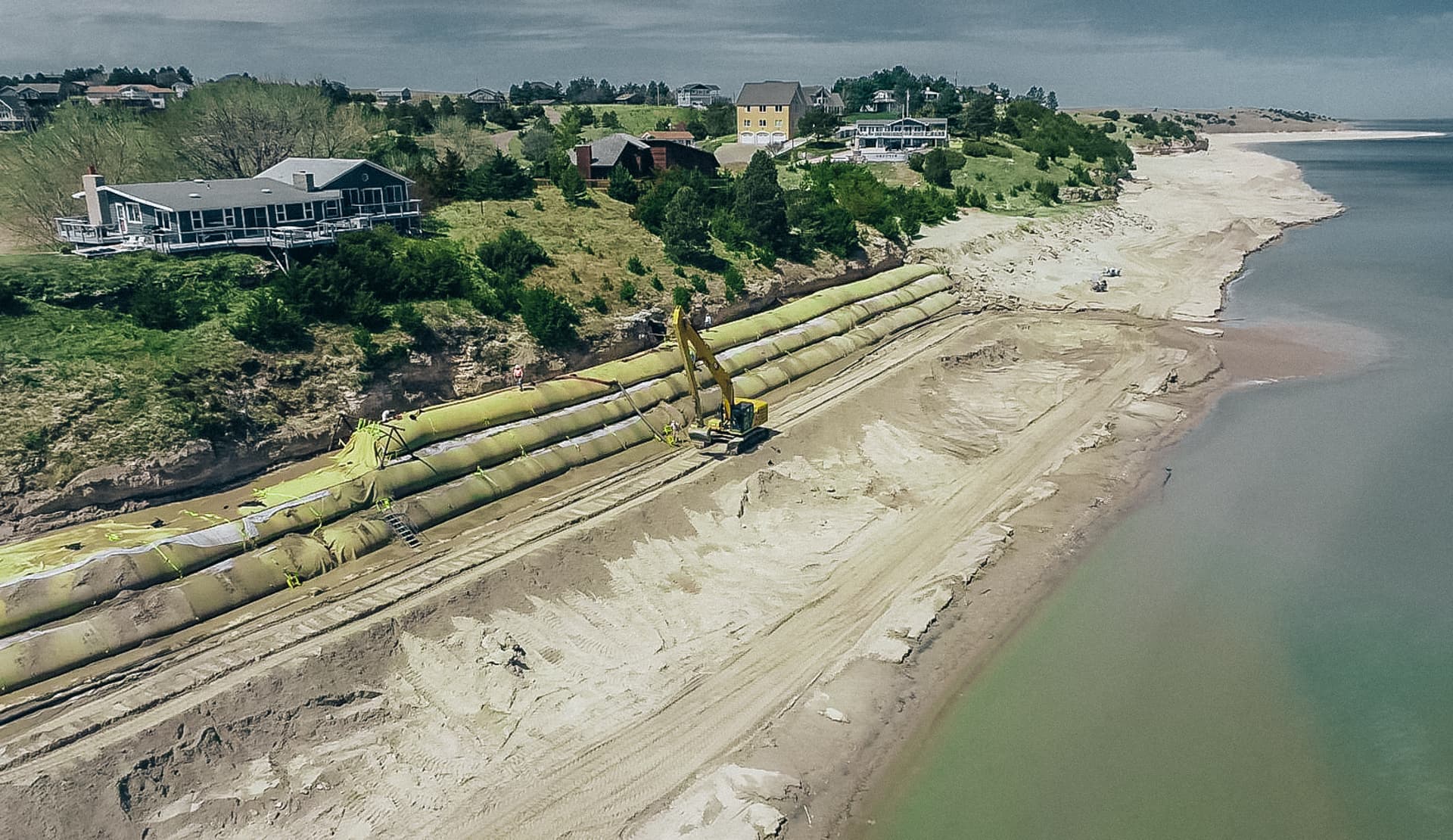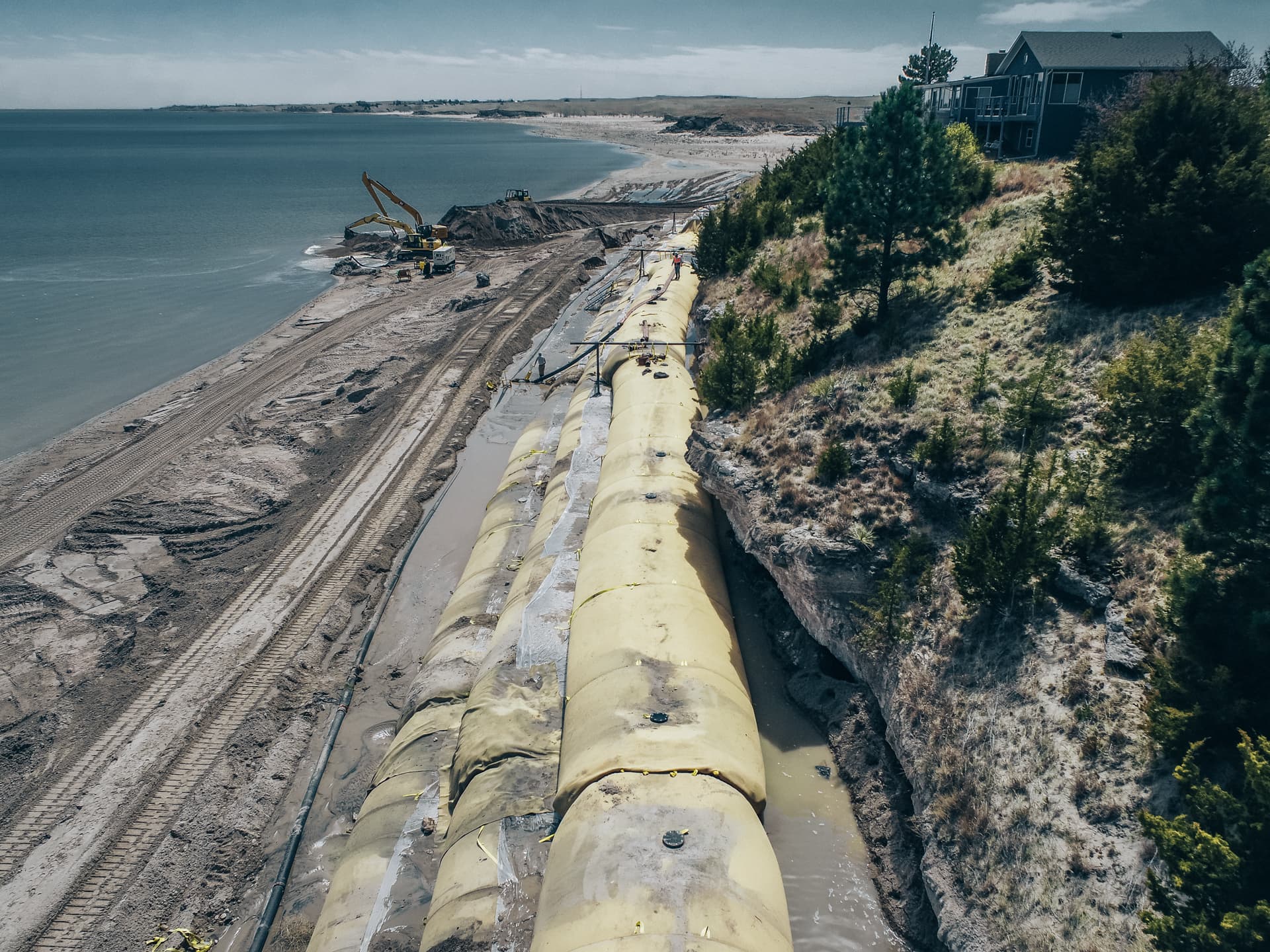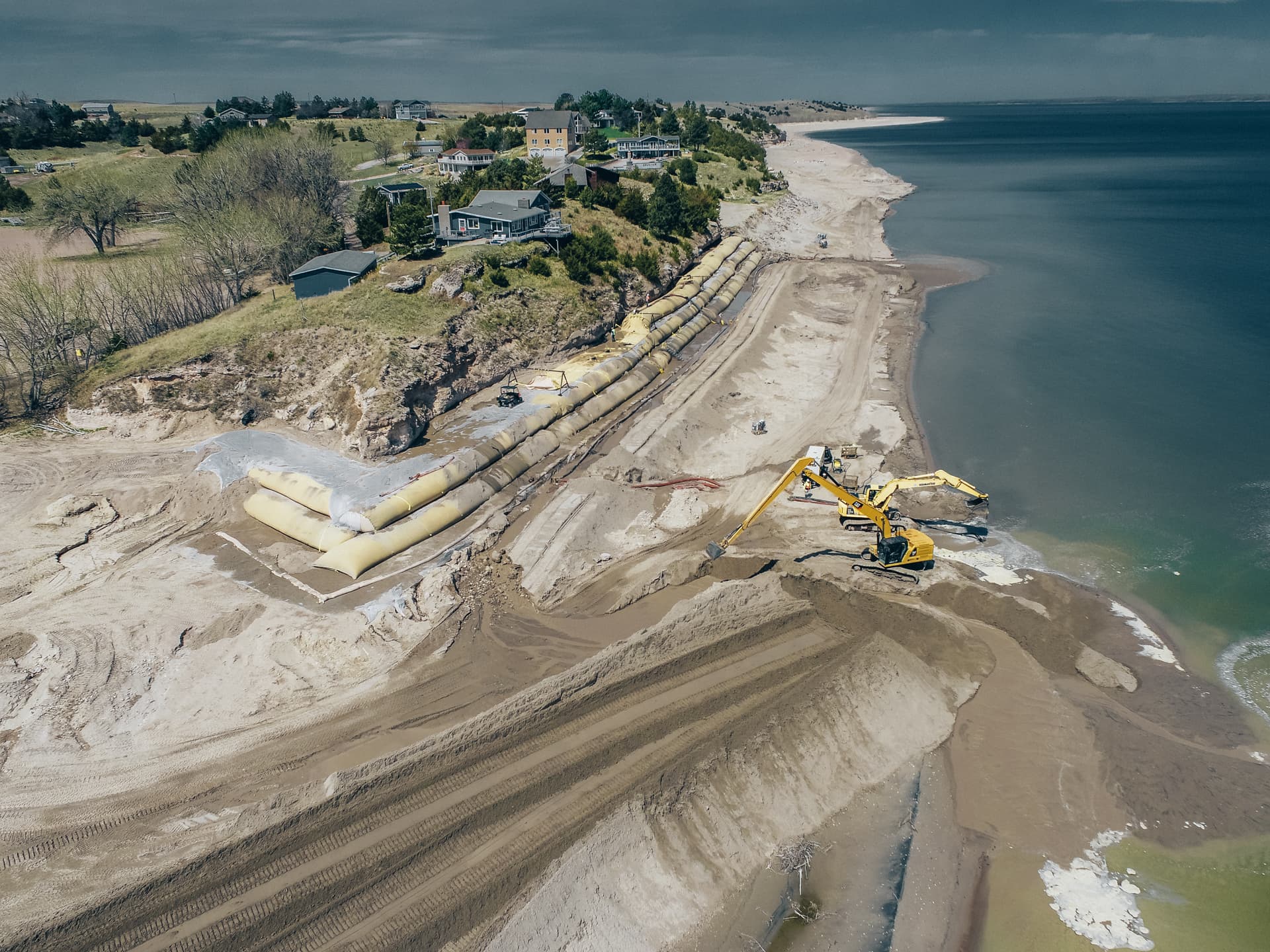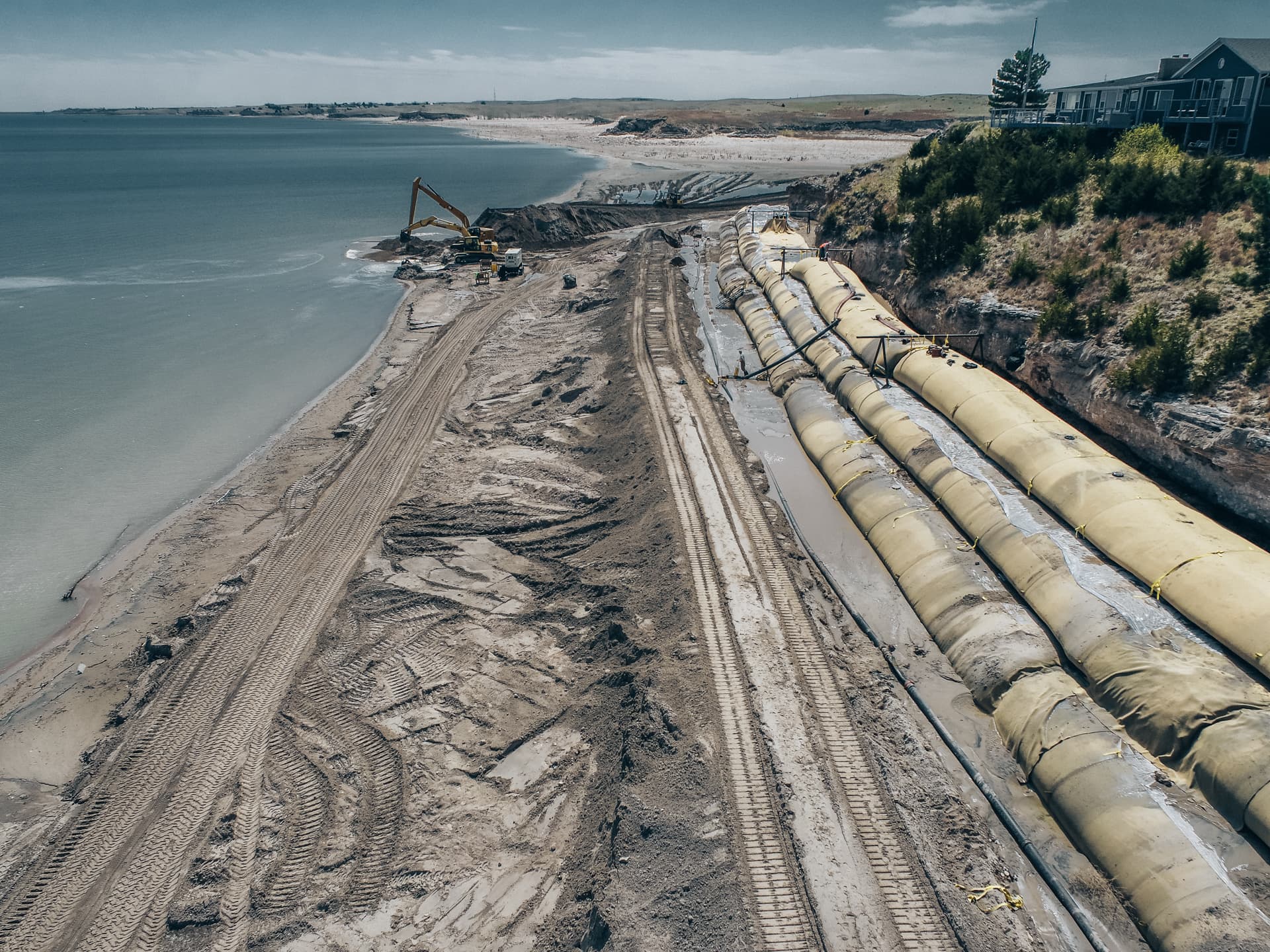
Products
Industries
Protecting shorelines from erosion in Lake McConaughy, Nebraska
Overview
Private residential development has increased significantly over the past 50 years along the south shore of Central Nebraska Public Power and Irrigation District’s (CNPPID) Lake McConaughy. Many of the residential homes are located near property boundaries, close to the cliffs, and include structures that allow residents to enjoy the view over the lake. The lake’s shoreline consists of vertical cliffs, the result of decades of wind, wave, and ice erosion. Left unchecked, this erosion will progress beyond the property boundaries and eventually compromise the stability of homes built along the top of the cliffs. CNPPID has attempted to arrest this erosion by constructing seawall and riprap revetments with limited success.
The Challenge
Erosion to the eastern bluff face had caused undercutting that was approximately 4.9 m (16 ft) high along the face and 168 m (550 ft) long. To reach the needed height of 5 m (16.5 ft), the erosion control structure required three levels of geotextile tubes.
Solution
GEOTUBE® TC1200MB units were selected to provide erosion control because they can be filled using on site materials, making them a more efficient solution than importing stone. Each layer was a minimum of 9 m (30 ft) in circumference and filled with a pumped sand slurry to a minimum of 1.7 m (5.5 ft) high. The tubes were fabricated with flat ends to achieve a continuous level top surface of each level.
The geotextiles tubes are exposed to the elements most of the year, so the geotextile must be a high strength tri-composite that has high UV and abrasion resistance to withstand the impact of ice flow and debris. Three layers of 9 m (30 ft) geotextile-tube units were installed to protect 174 m (572 ft) of shoreline. This project successfully stabilized the shoreline along the cliff, protecting at least three homes from collapsing into the lake.

Protecting shorelines from erosion

Protecting shorelines from erosion

Protecting shorelines from erosion
Explore more case studies
View allGEOTUBE Geobags used in coastal erosion control and protection project
Robust geomembrane lining for ITY Gold Mine tailings storage facility
Improving waste management with GSE
To meet the growing needs of a rapidly expanding resources industry, Pilbara Regional Waste Managment used GSE geomembranes at their new waste management facility.